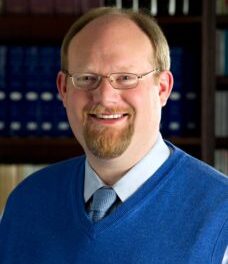On November 16, the Elon University Chamber Orchestra presented an ambitious and wide-ranging program that would have been daunting for a larger conservatory ensemble. It says much for music director Thomas R. Erdmann’s careful preparations and his players’ close attention that so much of the music came off so well.
The National Anthem is not usually reviewed, but Erdmann selected a strikingly different arrangement of “The Star-Spangled Banner,” by John Stafford Smith (1750-1836). It began with an extended passage for the first violins alone. They were joined by each remaining string section in turn until all were playing. This was a refreshing change, and it served to show off a good standard of ensemble within the sections that held for most of the concert.
The last of Franz Joseph Haydn’s three piano concertos – the Concerto in D, H.XVIII:11 – was given a good solid classical reading. Balance between the orchestra and the keyboard was excellent. If anything, the horns and woodwinds were a bit too shy. Victoria Fischer Faw was very effective as the soloist, playing with crisp and clear articulation. Her execution of the unidentified cadenzas was particularly pleasing. According to unsigned notes that accompany Philippe Entremont’s Teldec CD of the Haydn concerti, “some musicologists [hold the main theme of the third movement] to be a borrowing from the Bosnian dance ‘Siri Kolo.'” This is yet another delightful “Rondo all’Ungarese” from the good humored composer
Good string ensemble made for an enjoyable performance of George Frideric Handel’s Concerto Grosso in G, Op. 6/1. Erdmann secured strongly contrasted rhythms that made the movements more interesting than usual for the listener. The tasteful harpsichord continuo, played by Mary Alice Bragg, could be readily heard from the balcony. The fine instrument from Georgia is a welcome recent unexpected gift to the university.
The most intriguing piece on the program was the “Cantus in Memory of Benjamin Britten” by the mystical composer Arvo Pärt. It was written in 1977 in response to the death of the great English composer the previous year. It begins in silence with a tubular bell, struck very softly and slowly, that continues through most of the work. The other instruments – first and second violins, violas, cellos, and double basses – enter one section at a time. According to the Elon program notes, “They are each playing the same melody – a simple descending a minor scale – but each is playing it progressively slower in the ratio 1:2:4:8:16, so that the double basses are playing at 1/16 of the speed of the first violins.” This is a form popular in Renaissance music – a mensuration canon. Complex mathematics aside, the listener is enveloped in a chant-like atmosphere that is soothing and moving. This was very well played and I hope to hear the work more frequently.
With a small string section that included only four hard-working cellists, there was no way the musicians could pull off the great plush and sweeping waves of sound that are so identified with Howard Hanson’s “Romantic” Symphony (No. 2), but with strong solos from the good woodwind section and some very solid and subtle work from the horns, trumpets, and other brasses, most of the important elements came across. There was far more to admire than to criticize. It was a solid effort.











